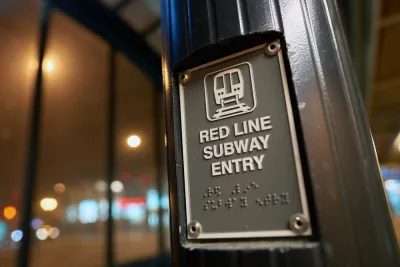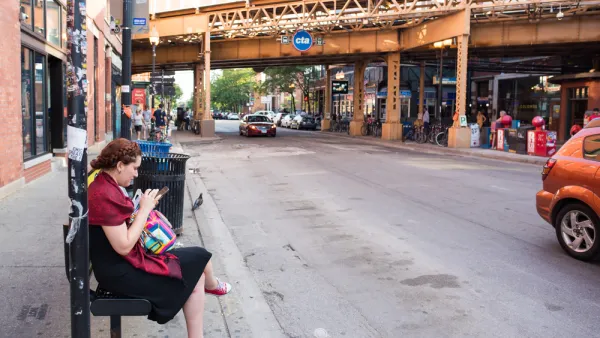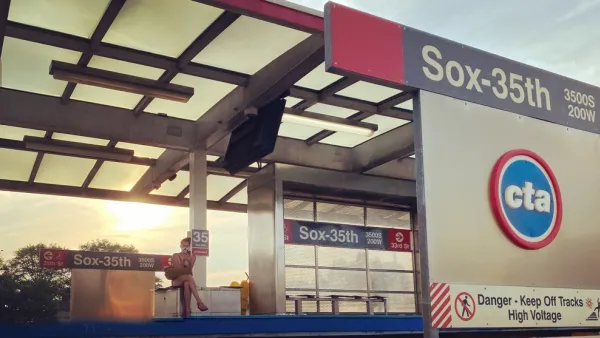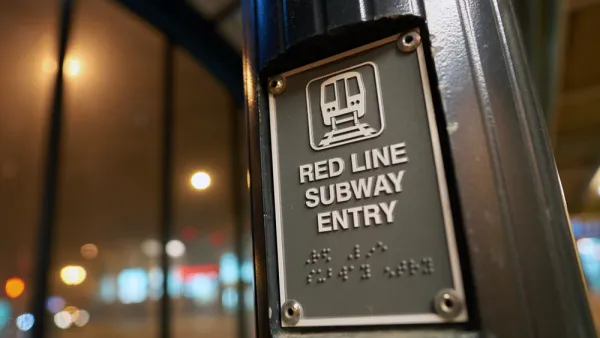A transit extension envisioned since the 1950s is this year making steady, tangible progress in the Windy City.

The Chicago Transit Authority's (CTA) Red Line extension to the Far South Side of Chicago is steadily moving toward reality.
An article by Nick Blumberg updates the status of the project, which is expected to enter a key development phase soon.
"In 2018, the CTA released its preferred plan for the location of the tracks and stations," writes Blumberg. "The extension would run largely alongside an existing Union Pacific rail line, with stations at 103rd Street, 111th Street, Michigan Avenue at 115th Street and 130th Street, better connecting the communities along the 5.6-mile stretch to the CTA’s network."
The CTA is underway with the project development phase, which is scheduled to take two years. "At the end of those two years, the CTA will have to have to finish 30% of the design and have identified about 30% of the funding that isn’t coming from the federal government," according to Blumberg. If the CTA keeps the work on schedule, the agency will be eligible to seek funding for the project from the federal government.
Already this year, the CTA "awarded a $38 million contract for preliminary engineering work and a final report on the extension’s environmental impact, key pieces needed to move the project forward," reports Blumberg.
The article includes a lot of detail about the numerous planning considerations in play with the new extension, like spurring transit oriented development, preventing displacement of existing communities, and maximizing the potential of the line to benefit the residents of the Far South Side, who have seen decades of disinvestment while dealing with some of the longest travel times in the city.
FULL STORY: CTA Hopes to Start Next Phase of Red Line Extension Planning ‘Very Soon’

National Parks Layoffs Will Cause Communities to Lose Billions
Thousands of essential park workers were laid off this week, just before the busy spring break season.

Retro-silient?: America’s First “Eco-burb,” The Woodlands Turns 50
A master-planned community north of Houston offers lessons on green infrastructure and resilient design, but falls short of its founder’s lofty affordability and walkability goals.

Delivering for America Plan Will Downgrade Mail Service in at Least 49.5 Percent of Zip Codes
Republican and Democrat lawmakers criticize the plan for its disproportionate negative impact on rural communities.

Test News Post 1
This is a summary

Test News Headline 46
Test for the image on the front page.

Balancing Bombs and Butterflies: How the National Guard Protects a Rare Species
The National Guard at Fort Indiantown Gap uses GIS technology and land management strategies to balance military training with conservation efforts, ensuring the survival of the rare eastern regal fritillary butterfly.
Urban Design for Planners 1: Software Tools
This six-course series explores essential urban design concepts using open source software and equips planners with the tools they need to participate fully in the urban design process.
Planning for Universal Design
Learn the tools for implementing Universal Design in planning regulations.
EMC Planning Group, Inc.
Planetizen
Planetizen
Mpact (formerly Rail~Volution)
Great Falls Development Authority, Inc.
HUDs Office of Policy Development and Research
NYU Wagner Graduate School of Public Service





























